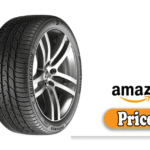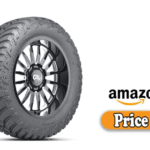When it comes to tires, two names stand out in the automotive world: Firestone and Goodyear. Both brands have established a reputation for quality, innovation, and exceptional performance. But how do they stack up against each other in everyday use?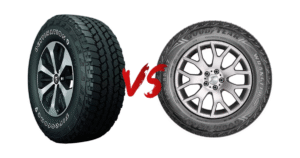 In this honest review, I’ll dive deep into my personal experience with both brands, highlighting what I like, what could be better, and how they compare in terms of design, performance, and build quality.
In this honest review, I’ll dive deep into my personal experience with both brands, highlighting what I like, what could be better, and how they compare in terms of design, performance, and build quality.
By the end of this article, you’ll have a clearer picture of which brand might be better for your vehicle, lifestyle, and driving preferences.
Introduction
Tires are arguably the most important part of your vehicle when it comes to safety and performance. They’re your car’s only contact with the road, and the right (or wrong) choice can make a huge difference in how your vehicle handles, stops, and performs in different conditions.
Over the past few years, I’ve had the chance to test both Firestone and Goodyear tires on different types of vehicles from sedans and SUVs to pickup trucks.
I’ve driven through rain, snow, and scorching summer highways. This article is a result of hundreds of hours of real-world driving experience, research, and comparison. Let’s get into the details.
What I Like
Firestone
One of the things I immediately liked about Firestone tires is their affordability. Whether you’re looking for all-season, touring, or performance tires, Firestone offers reliable options at a more budget-friendly price point than many competitors.
Highlights:
- Great value for money
- Consistent traction in all-season conditions
- Solid warranty coverage
- Popular models like Firestone Destination and Firehawk offer dependable performance.
I found that Firestone tires strike a good balance between performance and cost, especially for average drivers who want solid, reliable tires without paying premium prices.
Goodyear
Goodyear tires, on the other hand, impressed me with their advanced technology and premium build quality. They’re often pricier, but in many cases, the performance justifies the cost.
Highlights:
- Superior performance in wet and dry conditions
- Innovative tread designs for noise reduction
- Durability and long tread life
- Excellent high-speed stability and cornering grip
Models like the Goodyear Assurance WeatherReady and Eagle F1 are some of the best tires I’ve driven on. If performance and innovation are priorities, Goodyear is tough to beat.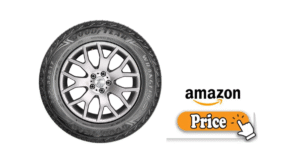 👉🏿👉🏻 Check Latest Price and Offer at Amazon 👈🏻👈🏿
👉🏿👉🏻 Check Latest Price and Offer at Amazon 👈🏻👈🏿
What Could Be Better
Firestone
While Firestone excels in affordability, there are areas where the brand could improve.
- Road noise: Some Firestone models, especially their budget line, tend to produce more noise on the highway compared to Goodyear.
- Wet traction: Although generally good, certain Firestone tires don’t inspire the same level of confidence in heavy rain as Goodyear tires do.
- Limited ultra-performance options: Firestone doesn’t have as many offerings for high-performance sports vehicles.
Goodyear
Goodyear tires are generally excellent, but they’re not perfect either.
- Price: For many drivers, Goodyear’s higher price point can be a deterrent.
- Ride comfort: A few models prioritize performance over comfort, resulting in a stiffer ride on rough roads.
- Availability: Some high-demand models may have limited stock or longer wait times for delivery.
My Personal Experience
Firestone: Steady and Reliable
I first installed Firestone Destination LE3 tires on my family SUV. They were quiet, grippy enough for all-season use, and lasted over 60,000 miles with regular rotation and alignment checks. Driving through rain and light snow was manageable, though I noticed some slipping on icy roads.
Later, I tried the Firehawk Indy 500 on a compact sedan. It’s a performance-oriented tire with excellent cornering grip and braking power. It genuinely surprised me how well it handled for a mid-tier price.
Goodyear: Premium and Powerful
Switching to Goodyear Assurance ComfortDrive on a crossover was like night and day. The difference in road noise, smoothness, and overall ride quality was instantly noticeable. Even during heavy rainfall, these tires felt glued to the road.
I also had the chance to drive a sports coupe fitted with Goodyear Eagle F1 Asymmetric 5. It delivered razor-sharp handling and unbelievable grip in dry and wet conditions. I’ve yet to experience anything comparable from Firestone in that performance class.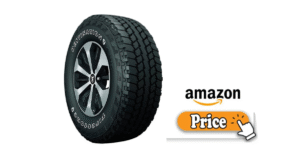
👉🏿👉🏻 Check Latest Price and Offer at Amazon 👈🏻👈🏿
Design
Firestone
Firestone tires often focus on versatile tread patterns that balance performance across dry, wet, and light winter conditions. Their designs are less aggressive but very practical for everyday driving.
- All-season symmetric patterns
- Moderate tread block stiffness
- Functional water-evacuation channels
Their tread designs are more utility-focused than performance-driven, which aligns with their target market.
Goodyear
Goodyear invests heavily in R&D, and it shows in their innovative tread design and tire technology.
- Directional tread designs for performance models
- Asymmetric patterns for dry and wet traction
- SoundComfort technology for noise reduction
- ActiveGrip and Evolving Traction Grooves
Goodyear tires not only look more aggressive but often incorporate cutting-edge design features that improve real-world performance.
Performance
Dry Performance
- Goodyear wins here, especially with their high-performance lines. Even their touring tires, like Assurance MaxLife, perform admirably under dry braking and cornering.
- Firestone holds up well, but doesn’t quite match Goodyear’s responsiveness and grip.
Wet Performance
- Goodyear again leads, thanks to specialized compounds and tread tech.
- Firestone tires handle moderate rain fine, but under heavy downpours, Goodyear provides superior confidence.
Snow/Winter
- Goodyear’s UltraGrip Winter series is top-tier for snow and ice.
- Firestone’s Winterforce series is very capable and more affordable, offering good performance for casual winter drivers.
Comfort and Noise
- Goodyear Assurance ComfortDrive offers exceptional ride comfort and minimal road noise.
- Firestone tires can be noisier and feel a bit stiffer on rough roads, especially older models.
Build Quality
Both brands offer solid manufacturing, but Goodyear takes the edge due to superior materials and tighter quality control.
Firestone Build Quality
- Manufactured under Bridgestone’s umbrella (a huge plus)
- Good tread wear ratings
- Affordable materials make them lighter, but sometimes less durable over time.e
Goodyear Build Quality
- Premium rubber compounds
- Reinforced sidewalls on many models
- Better resistance to punctures and abrasions
Alternative Option
If you’re not sold on either brand, here are a few alternative tire brands to consider:
1. Michelin
- Renowned for comfort, performance, and longevity
- Often pricier than both Goodyear and Firestone
2. Continental
- Excellent wet traction and innovative tech like EcoPlus
- Strong all-season touring tire lineup
3. Bridgestone
- Parent company of Firestone, offering higher-tier performance
- Quiet, durable, and premium, though costlier
Final Thought
So, who wins the Firestone vs Goodyear showdown?
It depends on your needs.
- If you’re on a budget and want dependable, long-lasting tires for everyday use,e: Firestone is a solid choice.
- If you demand top-tier performance, safety, and cutting-edge technology, Goodyear is worth the investment.
My honest verdict? I lean toward Goodyear for vehicles where performance and safety are top priorities. For commuter cars and daily drivers where budget matters most, Firestone offers tremendous value.
Firestone vs Goodyear
Throughout this review, we’ve compared Firestone vs Goodyear from multiple angles: performance, design, comfort, durability, and real-world use.
If you’re in the market for new tires, knowing how Firestone vs Goodyear compares can help you make a smart and informed decision.
Read More: Havoline vs Valvoline | My Honest Experience
FAQs: Firestone vs Goodyear | My Honest Review
Q1: Are Firestone tires as good as Goodyear?
Answer: Firestone offers excellent value and reliable performance, but Goodyear typically leads in technology, wet grip, and premium build quality.
Q2: Are Goodyear tires worth the higher price?
Answer: Yes, if you’re looking for advanced features, better handling, and quieter rides, Goodyear tires are worth the premium.
Q3: Which Firestone tire is best for SUVs?
Answer: The Firestone Destination LE3 is a great all-season tire for SUVs, offering comfort, traction, and long tread life.
Q4: What is the top Goodyear tire for winter driving?
Answer: The Goodyear UltraGrip series provides outstanding snow and ice traction, especially for colder climates.
Q5: Do Firestone and Goodyear offer warranties?
Answer: Yes. Both brands offer tread life warranties..s Firestone usually ranges from 40,000–70,000 miles, while Goodyear ranges from 50,0085,000 miles, depending on the model.
